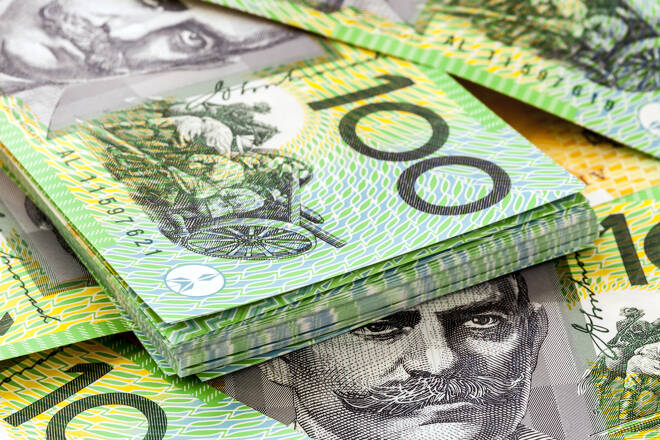Advertisement
Advertisement
AUD to USD Forecast: Implications of Aussie and US Consumer Confidence
By:
Key Points:
- The AUD/USD gained 0.41% on Monday, closing the session at $0.65398.
- On Tuesday, Australian consumer confidence numbers could influence the RBA rate path.
- Later in the session, US consumer confidence and Fed chatter warrant investor attention.
In this article:
Monday Overview of the AUD/USD
The AUD/USD gained 0.41% on Monday. Partially reversing a 0.86% slide from Friday, the Australian dollar ended the session at $0.65398. The Australian dollar fell to a low of $0.65099 before rising to a high of $0.65468.
Aussie Consumer Confidence in the Spotlight
On Tuesday, consumer confidence numbers for March could influence the RBA interest rate trajectory.
The Westpac Consumer Confidence Index declined by 1.8% to 84.4 points. Economists forecast the Westpac Consumer Confidence Index to fall by 1.6% to 84.6 points in March.
The survey could influence the RBA interest rate trajectory.
A decrease in consumer confidence could signal a fall in consumer spending. Downward trends in consumer spending could dampen demand-driven inflationary pressures. The RBA could respond by discussing interest rate cuts to reduce borrowing costs. Lower borrowing costs could increase disposable income and support consumer spending.
Beyond the numbers, investors must consider RBA commentary and stimulus chatter from Beijing. RBA Ellis Connolly is on the calendar to speak on Tuesday.
US Consumer Confidence and Core Durable Goods Orders in Focus
US core durable goods orders and consumer confidence will garner investor interest. Expectations of a soft US landing could increase dollar sensitivity to core durable goods orders.
Economists forecast core durable goods orders to increase by 0.4% in February after falling by 0.3% in January.
The CB Consumer Confidence Index could have a more significant impact on the AUD/USD. An unexpected increase in consumer confidence could signal a pickup in consumer spending. An upward trend in consumer spending could fuel demand-driven inflation and influence the timeline for a Fed rate cut.
Economists forecast the CB Consumer Confidence Index to remain at 106.7 in March.
Beyond the numbers, FOMC member speeches could move the dial. Diverging views on the number of rate cuts in 2024 from the FOMC Economic Projections could move the dial.
Short-Term Forecast
Near-term AUD/USD trends will likely hinge on the Australian and US inflation figures. The US Core PCE Price Index numbers are out on Friday and could sink bets on an H1 2024 Fed rate cut. However, hotter-than-expected inflation numbers from Australia could put an RBA rate hike back on the table.
AUD/USD Price Action
Daily Chart
The AUD/USD remained below the 50-day and 200-day EMAs, affirming the bearish price signals.
An Aussie dollar breakout from the $0.65500 handle would support a break above the 50-day EMA. A break above the 50-day EMA would bring the $0.65760 resistance level and the 200-day EMA into play.
Australian and US consumer confidence numbers need consideration.
Conversely, an AUD/USD drop below the $0.65 level could give the bears a run at the $0.64582 support level.
With a 14-period Daily RSI reading of 46.60, the AUD/USD may break below the $0.64582 support level before becoming oversold.
About the Author
Bob Masonauthor
With over 20 years of experience in the finance industry, Bob has been managing regional teams across Europe and Asia and focusing on analytics across both corporate and financial institutions. Currently he is covering developments relating to the financial markets, including currencies, commodities, alternative asset classes, and global equities.
Latest news and analysis
Advertisement
